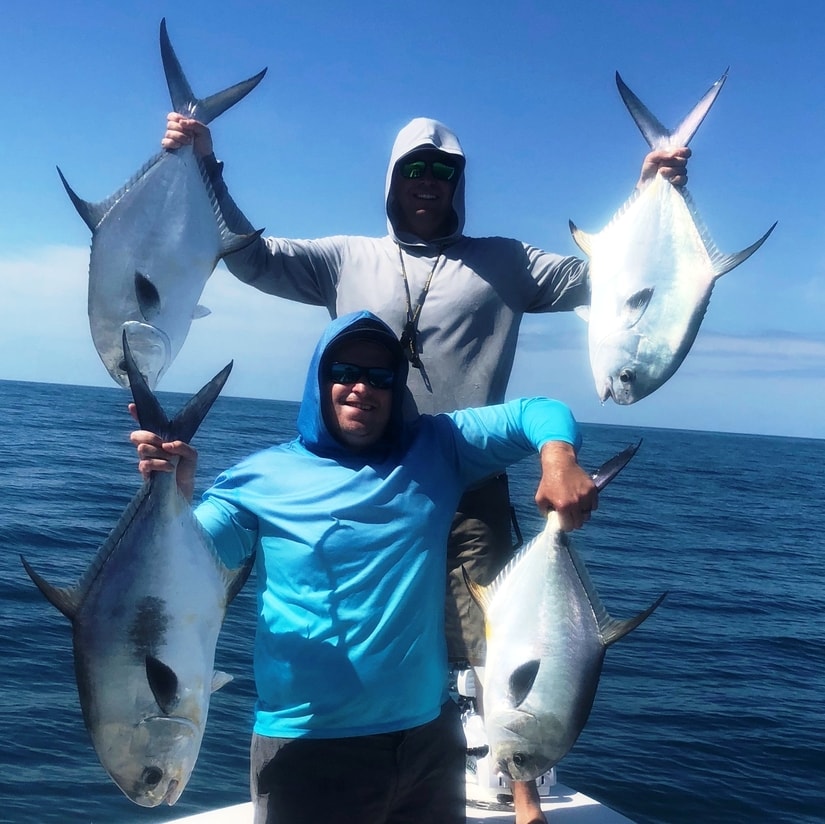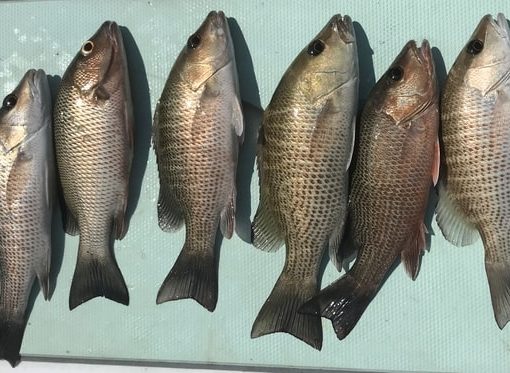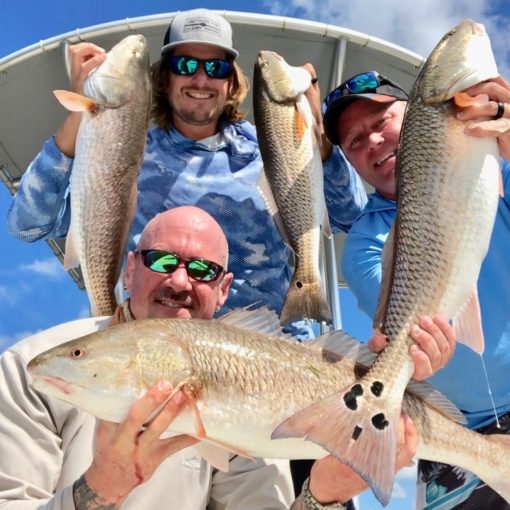It may have had 2 US Navy submarines named in its honor but Trachinotus falcatus nevertheless has a few issues. First, its common name is more likely to be associated with an official piece of paper than a fish. Second, it is often mistaken for its commercially popular relative Trachinotus carolinus AKA the Florida pompano. This is the permit, a medium sized popular western Atlantic game fish that likes Florida’s coastal flats, deep channels, and nearshore waters. It is however equally at home out in deeper water so long as there is a reef, an oil rig, or a wreck or two available. Book the best Cape Coral charter fishing trip for permit with Blue Line Charters.
As is the case with most scientific names, permit gets its tongue twister via logical progression. Trachys is Greek for ‘rough’ and noton means ‘back’. Combine the two and it provides a clue about one of the genus’ notable characteristics. Falcatus comes from Latin and roughly translates to ‘armed with scythes’. It refers to the scythe shaped dorsal fin that sometimes sticks up above the water when a school of them is feeding close to the surface.
When Size And Color Matters – Identifying Permit
When it comes to telling the difference between permit and pompano, the biggest clue is size. When mature, permit are a lot bigger than pompano. They can reach 3 foot in length, and weigh 15 to 20 pounds. That’s around twice the size of a mature pompano. Permit this size are not unusual either around Florida.
You could however be forgiven for getting young small permit and pompano mixed up because they are almost identical. The main clue here though is colored patches on the underbelly, chin and fins. Young ie small permit and pompano of all ages have them but the pompano’s are yellow whilst the permit’s are orange.
Other differences between the two include the shape of the dorsal and anal fins. The permit’s are long and angled backwards, whilst the pompano’s are short and more upright. Permit have a narrower angle between their tail fin lobes than pompano. There is also a difference in the shape of the forehead. Permit have a noticeable hump whilst pompano have a smooth slope. Pompano typically have a dark back and silver body whilst permit are a more uniform silver, often with a dark spot behind the pectoral fin.
Apart from the above features, the permit’s body shape is deep and laterally compressed. It has large eyes, a large mouth, and a very blunt, stubby upper jaw. Their primary diet consists of crabs and molluscs.
Spawning Habits
Even though they live in shallow water systems, permit spawn offshore in deeper water, usually over reefs. In common with most fish species here, they are spring and summer spawners. However, the presence of permit fry along Florida Keys beaches all year round (except July) indicates they can spawn continuously in the right conditions.
Females are batch spawners, releasing multiple batches of eggs throughout spawning season. Once hatched, the young larvae become juvenile permit or fry within 2 to 3 weeks. They then settle into what are called ‘nursery habitats’ where they remain until they’re big enough to join other adults in open water. By 3 years they will have grown to around half their potential eventual size, and begun reproducing.
Permit Status In The Wild
Tagging studies are currently being done to better understand the life of this popular fish and also get an idea of their numbers. Tagged permits are re-caught on a regular basis, indicating that perhaps their numbers are not as great as they could be. There are bag, size and vessel limits in place in Florida for permit fishing. When you book your permit fishing in Cape Coral Florida with us, we take care of this paperwork for you.





